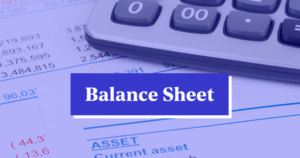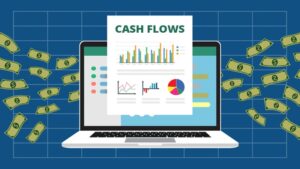The stock market has always been an important stage for wealth growth. Whether it is the steady performance of Taiwan stocks driven by the semiconductor boom or the innovation opportunities from U.S. tech giants, countless investors are drawn in. However, for beginners, directly putting in real money may carry risks due to lack of experience.
At this point, stock investment simulation becomes an ideal zero-risk entry method to start the investment journey. This article explains the value and methods of stock investment simulation, from basic knowledge to practical skills, to help you lay a solid foundation before entering the real market.

1. What is Stock Investment Simulation?
Stock investment simulation, as the name suggests, is the process of using virtual funds to simulate stock trading in a real market environment. Through simulation platforms, investors can experience the full process of buying and selling stocks, analyzing trends, and formulating strategies, without the worry of losing money. In the Taiwan market, for example, you can simulate investing in popular stocks such as TSMC (2330) and MediaTek (2454), or even U.S. stocks such as Apple (AAPL) or Tesla (TSLA).
2. Why Do Beginners Need Stock Investment Simulation?
- Zero-risk learning environment
At the end of 2024, U.S. stocks corrected by 10% due to tech stock valuation adjustments, and many beginners suffered heavy losses from failing to set stop-losses. Simulation trading lets you make mistakes in a pressure-free environment and learn how to handle volatility. - Familiarity with trading tools and technical analysis
Most simulation platforms (such as MetaTrader or broker-provided demo accounts) include candlestick charts, moving averages (MA), RSI, and other indicators. Beginners can practice using these tools in real operations. For example, is it a buy signal when TSMC breaks above its 50-day MA? These questions can be tested in simulations. - Developing investment mindset
Market fluctuations often trigger emotional swings. Simulation trading allows you to practice patience and discipline through virtual profits and losses, avoiding wrong decisions later due to fear or greed.

3. How to Start Stock Investment Simulation?
Step 1: Choose a Suitable Simulation Platform
There are a wide variety of simulation trading platforms, from broker-provided tools to third-party apps. In Taiwan, for example, Fubon Securities and Yuanta Securities both offer demo accounts. For access to international markets, you can choose platforms supporting multi-asset trading. For example, Ultima Markets offers not only stock simulation but also forex and CFDs, letting you explore multiple assets on one platform. It features an intuitive interface, MetaTrader 4 support, and rich educational resources, making it ideal for beginners. Click here to open a demo account with Ultima Markets.
Step 2: Set Goals and Strategies
Before starting, set clear goals. Do you want to practice short-term trades (holding 1–3 days) or simulate long-term investing (holding months)? For example, in early 2025, if you are optimistic about AI, you can simulate investing in TSMC or NVIDIA (NVDA), with a 10% take-profit and 5% stop-loss.
Step 3: Practice and Record
Suppose you have TWD 100,000 in virtual funds, you can allocate across stocks. For example, 50% in Taiwan 0050 ETF, 30% in TSMC, and 20% in U.S. tech stocks. After each trade, record the reasons for profit or loss, such as “Bought TSMC after earnings beat, +8% profit” or “Sold Tesla during panic, -3% loss.” Such reflection accelerates growth.

4. From Simulation to Real Trading: Key Points
While simulations are risk-free, transitioning to real trading requires caution. Suggestions:
- Start small
Begin with modest amounts to test strategies learned from simulation. - Risk management
Set stop-losses (5–10%) to avoid excessive losses from sudden moves. - Keep learning.
Markets change quickly; read financial news and study financial reports to stay competitive.
Conclusion: Simulation Puts You Ahead at the Starting Line
Stock investment simulation is not only a training ground for beginners but also a testing field for advanced traders. With zero-risk practice, you can learn market patterns, refine trading skills, and find your own rhythm amid 2025’s changing environment.
Whether it’s the steady growth of Taiwan stocks or U.S. innovation opportunities, simulation is the first step toward financial freedom. Ready? Open your demo account now and start your journey!

FAQ
- What is the difference between stock investment simulation and real trading?
Simulation uses virtual funds without real P&L pressure, mainly for learning and testing. Real trading involves actual money and requires stricter risk and emotion management. - Which free platforms are recommended for stock investment simulation?
International platforms like Ultima Markets support stocks, forex, and other assets, suitable for broader exposure. - How to use simulation trading to learn technical analysis?
In simulation, you can use candlestick charts to judge trends and RSI to find overbought/oversold points. For example, if TSMC’s RSI exceeds 70, simulate selling to observe the effect.




